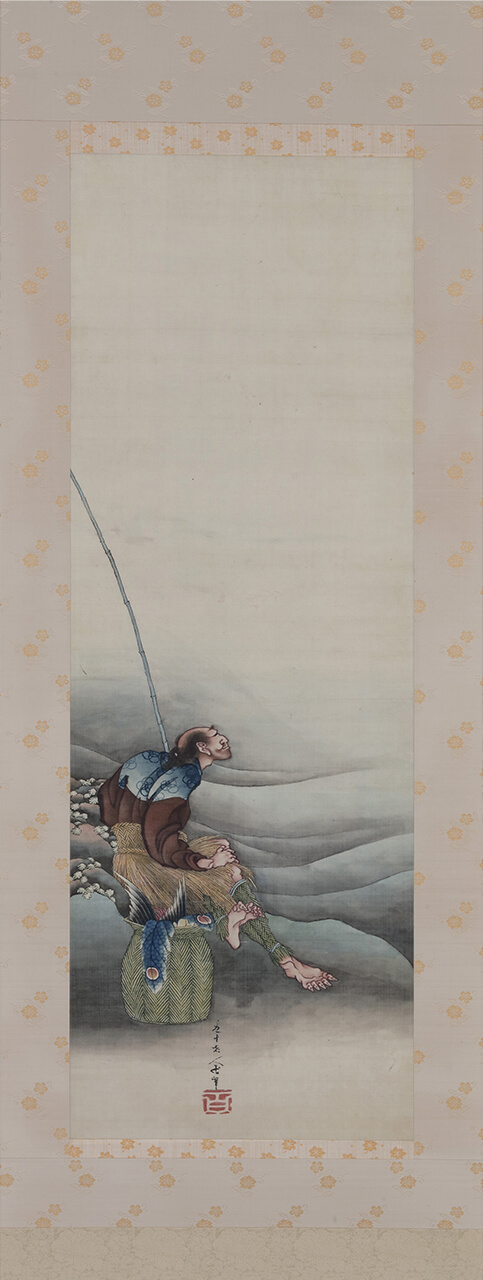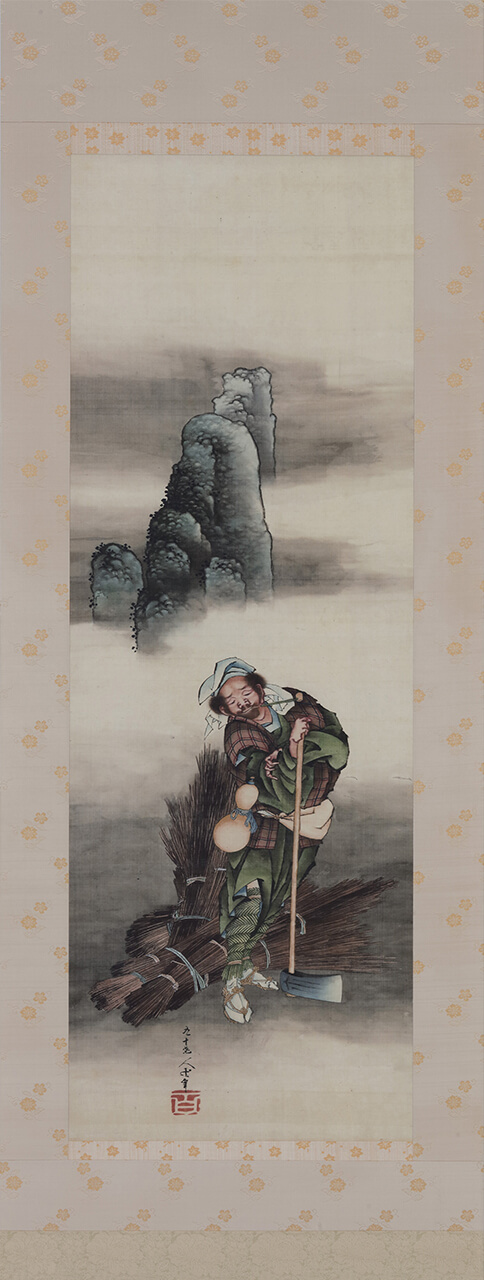Fisherman and Woodcutter
Facsimiles of works in the collection of the Freer Gallery of Art, Smithsonian Institution, Washington, D.C. : Gift of Charles Lang Freer, F1904.181, F1904.182.
These images are based on the high resolution facsimile produced by the Tsuzuri Project. Unauthorized copying, duplication, or transfer of these images is strictly prohibited.
DATA
- Artist:
- Katsushika Hokusai
- Historical era:
- Edo (19th century)
- Material:
- printed on silk
- Medium:
- pair of hanging scrolls
- Theme:
- High Resolution Facsimile of Japanese Art Abroad
- Size:
- Each screen H113.0 × W39.6 cm
- Recipient:
- Sumida Ward
- depository:
- The Sumida Hokusai MuseumMAP
[Original]
- Current owner:
- The Freer Gallery of Art of the Smithsonian Institution
- Material:
- ink, color on silk
DESCRIPTION
This work depicts a fisherman seated in front of drifting waves with a creel by his side, and a woodcutter with a pipe in his mouth with strangely shaped rocks behind him. The painting is presumably based on the Dialogue between a Fisherman and a Woodcutter, where they tell each other about their respective fates, and how they lead their lives quietly together with parts of great nature as their respective friends, away from the rest of the world. At the same time, however, the feathers of the bird contained in the fish basket can recall the Noh play Hakuryu, in which a fisherman named Hakuryu finds the feathered dress of an angel at Miho no Matsubara, in today's Shizuoka Prefecture. On the other hand, the gourd bottle that the woodcutter carries on his waist can recall The Legend of a Son Taking Good Care of His Old Father, in which spring water that the devoted son collects for his old father turns into liquor, and the father becomes cured of his disease after drinking it. Thus each figure in the work can also evoke a separate tale. This picture, which Hokusai produced at 90, is arguably his last work. The philosophical facial expressions of the two men may reflect the way Hokusai might have been feeling.


